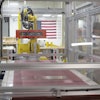Tasked with the effort to develop electronic, rules-based workflows for the automation of manual processes, one company found a business process management tool to be very helpful.
Effectively aligning all aspects of a business organization with the wants and needs of the customer is one of the most widespread trends in manufacturing today. Companies are able to choose from a wide range of technological solutions that increase efficiency and flexibility, as well as add insight into their respective businesses.
Several years ago, Liquid Controls, a division of IDEX Corporation and an Illinois-based manufacturer of flow meters and accessories for liquid and gas management, sought either an online forms tool or a content management solution. The company wanted to find one with the ability to develop electronic, rules-based workflows, enabling Liquid Controls to automate manual processes and provide increased visibility into existing business processes.
The company found what it was looking for in a business process management tool from BP Logix.
“Some of the tools were looked at were real high-cost tools and some of them were low-cost and didn’t look like they had that many good feature sets to them,” said Bruce Lawrence, Group Network Manager for Liquid Controls. The BP Logix tool, he said, “just kind of blew us away.”
Liquid Controls discovered BP Logix about six years ago when it received an online demo version of a business process management tool. Lawrence said his company found it easy to use and available for the right price, as it was looking for a web-based tool that could be rapidly deployed without the need to write much code. It was also an effective tool for managing capital appropriation approvals and ISO standard documents.
The implementation process went rather well, but it wasn’t without its challenges Lawrence said he believes his company did not involve enough people in the process of determining the tool’s function at Liquid Controls, and the transition from the Legacy version was a bit bumpy at times. Initially, the company wanted to use the tool to address control processes, have some visibility signatures, and have audit retention times. However, its needs have changed over times.
“It really has augmented with all of the different things it can do, instead of taking away too much of what you bought it for,” said Lawrence.
Business process management tools has evolved significantly in the years since Liquid Controls first implemented the tool, but when BP Logix released its Process Director tool, business process management became even more of a priority for the Illinois-based manufacturer.
“They took a lot of our input and would put it into their product,” said Lawrence. “They were always looking for what the industry was calling for and they’d roll it right in there.”
Today, the tool is used in several of the company’s processes – from accounting and quality assurance to engineering and human resources.
Furthermore, the company is not only is it controlling its existing processes, but it is improving those processes in order to make the business run more efficiently.
“It became better visually, easier to use, and easier to deploy processes,” said Lawrence. “It has really paid off for us.”
And the usefulness of the tool hasn’t gone unnoticed around Liquid Controls.
“As far as adding processes to it, there are requests non-stop,” said Lawrence. “But that’s the mentality. People look at that first as far as the place to control things and have the visibility that they want.”
According to Scott Menter, Vice-President of Business Solutions for BP Logix, manufacturers are looking for the following things from their business process management solutions:
- Efficiency
- Compliance
- Flexibility
- Process Insight
Your business is essentially the sum of all your processes,” said Menter. “What you’re getting from a BPM solutions that you don’t know you’re getting up-front is a window into the way your business works.”
He also offered some advice for manufacturers who are looking to improve their business process management through the implementation of a new tool. According to Menter, it isn’t hard to recognize and address the need to improve. The real challenge comes later.
“Everybody is on board for automation and for the first implementation,” he said. “What we are trying to help people understand is, the day after that, and the day after that, your business is going to change and your processes are going to change.”


















